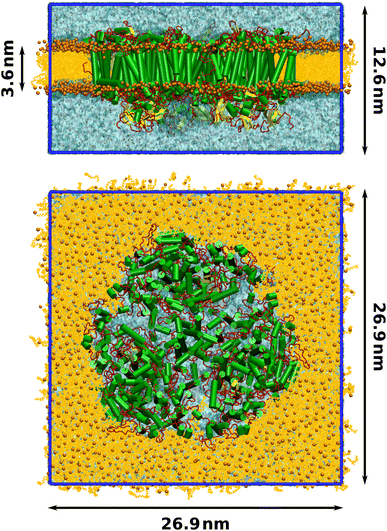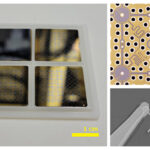2023-03-24 ミュンヘン大学(LMU)
◆光系I内の葉緑素は、アンテナ複合体で太陽光を捕捉し、エネルギーを反応中心に伝達します。そこで、太陽エネルギーは酸化還元プロセスを引き起こすために使用されます。光系Iの量子収率はほぼ100%であり、吸収されたほとんどすべての光子が反応中心で酸化還元イベントにつながることを意味します。
◆研究者たちは、葉緑素全体の光励起を模擬しました。高度に正確な多重参照法を使用して電子励起を計算しました。この手法により、最新技術に基づいて光系Iを記述することができます。
<関連情報>
- https://www.lmu.de/en/newsroom/news-overview/news/photosynthesis-varying-roads-lead-to-the-reaction-center.html
- https://pubs.rsc.org/en/content/articlelanding/2023/sc/d2sc06160k
光化学系Iの熱的サイトエネルギー揺らぎ:MD/QM/MM計算による新しい知見 Thermal site energy fluctuations in photosystem I: new insights from MD/QM/MM calculations
Sebastian Reiter, Ferdinand L. Kiss, Jürgen Hauer and Regina de Vivie-Riedle
Chemical Science Published:06 Feb 2023
DOI:https://doi.org/10.1039/D2SC06160K

Abstract
Cyanobacterial photosystem I (PSI) is one of the most efficient photosynthetic machineries found in nature. Due to the large scale and complexity of the system, the energy transfer mechanism from the antenna complex to the reaction center is still not fully understood. A central element is the accurate evaluation of the individual chlorophyll excitation energies (site energies). Such an evaluation must include a detailed treatment of site specific environmental influences on structural and electrostatic properties, but also their evolution in the temporal domain, because of the dynamic nature of the energy transfer process. In this work, we calculate the site energies of all 96 chlorophylls in a membrane-embedded model of PSI. The employed hybrid QM/MM approach using the multireference DFT/MRCI method in the QM region allows to obtain accurate site energies under explicit consideration of the natural environment. We identify energy traps and barriers in the antenna complex and discuss their implications for energy transfer to the reaction center. Going beyond previous studies, our model also accounts for the molecular dynamics of the full trimeric PSI complex. Via statistical analysis we show that the thermal fluctuations of single chlorophylls prevent the formation of a single prominent energy funnel within the antenna complex. These findings are also supported by a dipole exciton model. We conclude that energy transfer pathways may form only transiently at physiological temperatures, as thermal fluctuations overcome energy barriers. The set of site energies provided in this work sets the stage for theoretical and experimental studies on the highly efficient energy transfer mechanisms in PSI.



